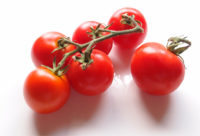"To facilitate simulation use by our process engineers, we created a library of equipment templates that simplify the creation of a simulation model," says Malcolm Beaverstock, manager of advanced control and simulation at GM. Templates define components of plant operations, containing a definition of the equipment as well as operating and downtime characteristics.
"We use Witness [software] to understand, as well as improve, our operations" explains Beaverstock. "We had one plant switch from a manual material transport system to an automated one. However, the automated system didn't work as well as the old manual one." Productivity only reached 80 percent compared to the manual system. That was puzzling because the new line was supposed to be more flexible, require less labor and reduce waste.
GM simulated the operations and found that production scheduling for the packaging lines now had a surprisingly strong effect on the automated operation. The new system had an optimal performance point influenced by the production schedule. Because simulation looks at the big picture, including all downtime and changeover characteristics involved in production and packaging operations, it was clear that scheduling was the problem.
Scheduling this change brought the plant up to 100 percent productivity compared to the manual approach. By using simulation to optimize the order in which different size packages were filled, the plant reached 110 percent productivity compared to the earlier approach.
